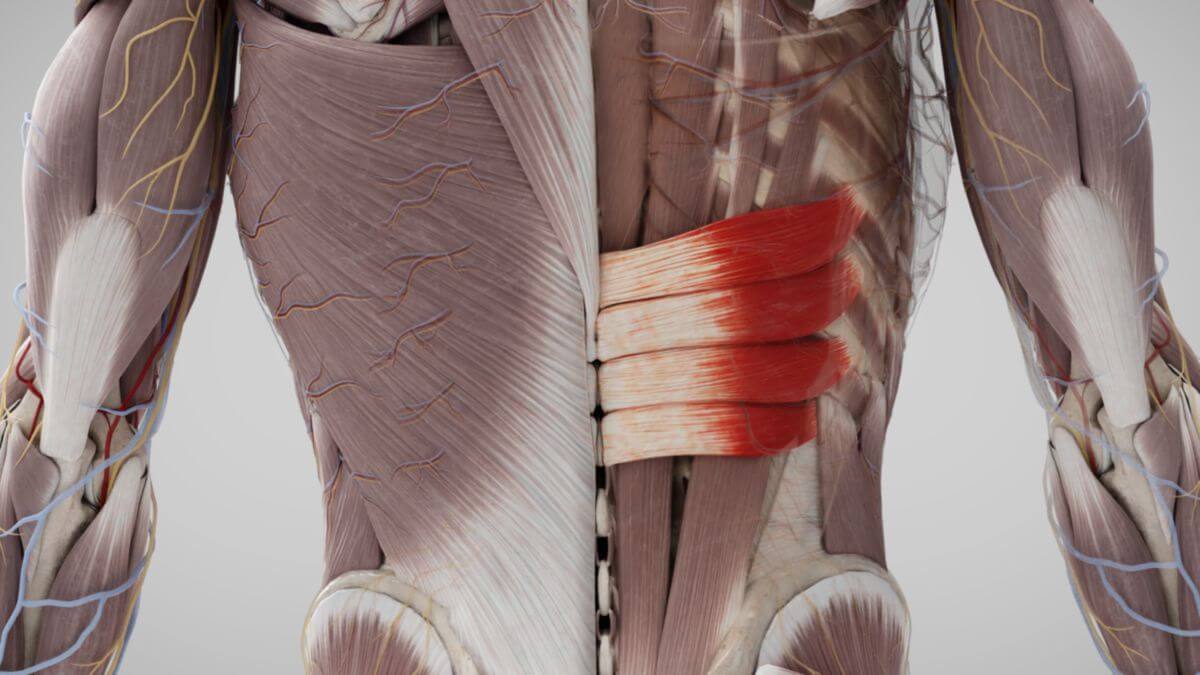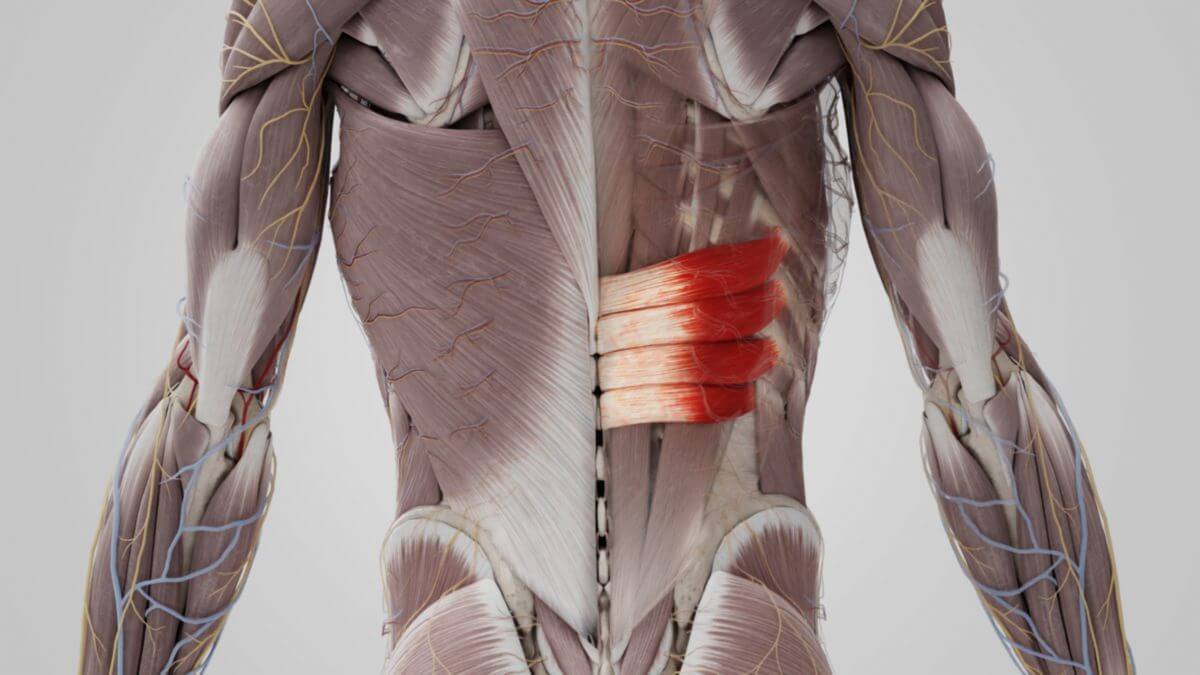Corpus: Serratus posterior inferior muscle
1. Definition
The serratus posterior inferior muscle is part of the deep layer of the secondary migratory back muscles. These muscles initially develop from the limb buds and later migrate into the back. They are typically innervated by the anterior rami of the spinal nerves.
2. Course
2.1. Origin
The serratus posterior inferior muscle originates from the spinous processes of the lower two thoracic vertebrae and the upper two to three lumbar vertebrae. These origins are fused with the thoracolumbar fascia.
2.2. Attachment
The muscle inserts at the lower edges of the 9th to 12th ribs, extending slightly beyond the costal angle. Its course is similar to that of the serratus posterior superior muscle, but the muscle fibers of the serratus posterior inferior run from the bottom to the top.
3. Innervation
The serratus posterior inferior muscle, like most secondarily migrated back muscles, is innervated by the anterior banch of the spinal nerves, specifically from segments Th11 to L2.
4. Function
The function of the serratus posterior inferior muscle is interpreted differently in anatomical literature. When the muscle contracts bilaterally, it moves the lower ribs dorsally and caudally, narrowing the lower thoracic aperture, which supports expiration. This movement has led some authors to classify the muscle as an expiratory respiratory muscle.
However, other sources suggest that the muscle may indirectly support inspiration. This function is considered more complex and involves the simultaneous contraction of the diaphragm. In this context, the muscle is thought to "fix" the lower ribs during inspiration, counteracting the cranial and ventral pull of the diaphragm.




